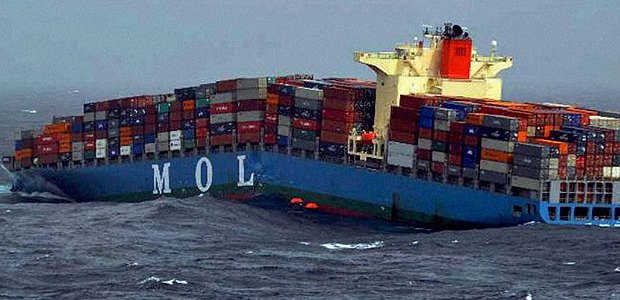
Report Says Fewer Containers Lost at Sea Since 2014
From 2008 to 2016, an average of 568 containers were lost at sea per year -- 1,582 on average when catastrophic events are included. On average, 64 percent of containers lost during that period were attributed to a catastrophic event.
The "Containers Lost at Sea -- 2017 Update" report from the World Shipping Council contains some good news: On average, the number of containers lost is down from the number in 2014. But it also points out that a single catastrophic event at sea -- two that are mentioned are the MOL Comfort total loss in 2013 and the El Faro sinking in 2015 -- can make the numbers soar.
The MOL Comfort was the worst container ship loss in history, the report says. It occurred June 17, 2013, when the ship broke in two while en route from Singapore to Jeddah, Saudi Arabia, with 4,293 containers on board. All 26 crew members escaped, but both halves of the ship and all of the containers were lost, the rear half sinking on June 27 and the fire-damaged forward half sinking July 11 as it was being towed by a salvage company.
The lost containers from the ship accounted for 77 percent of all containers lost at sea that year, which was far and away the worst year for lost containers during the period, according to the council's report. The El Faro's containers lost in 2015 represented almost 43 percent of the total containers lost that year.
A third major loss cited in the report is the M/V Rena, which ran aground in New Zealand in 2011, with about 900 containers lost.
"Although the number of containers lost at sea represents a very small fraction of the number of containers carried on ships each year, the industry continuously strives to reduces those losses. The latest report shows that the average number of containers estimated to be lost each year is down from the estimates reported in 2014. This is an encouraging sign. The report also identifies initiatives the industry is actively supporting to increase container safety and reduce losses further," John Butler, the council's president and CEO, said when the report was released this month.
Containers lost overboard represent about one thousandth of 1 percent of the approximately 130 million container loads shipped each year, according to the report.